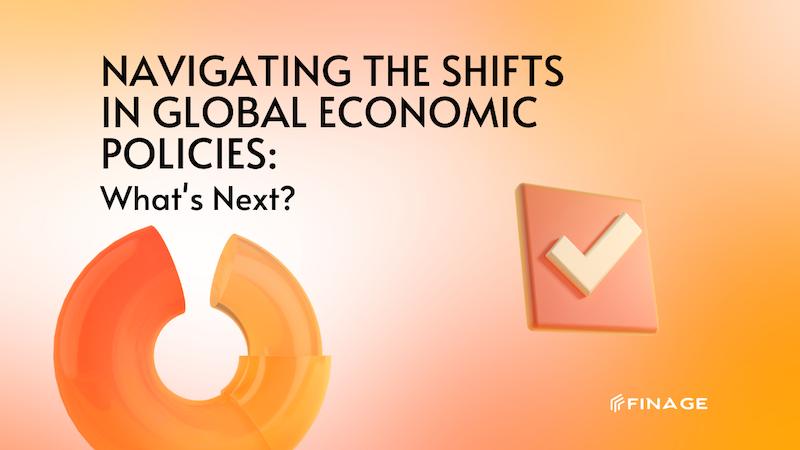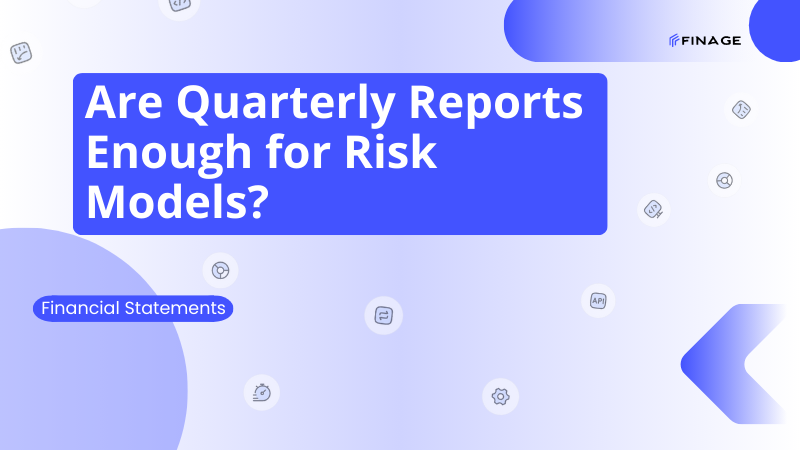Navigating the Shifts in Global Economic Policies: What's Next?
10 min read • August 24, 2024

Introduction
The global economy is constantly evolving, shaped by shifting economic policies, geopolitical developments, and emerging market trends. As governments and central banks around the world respond to new challenges and opportunities, businesses and investors must navigate these changes to remain competitive and resilient. This blog post explores the recent shifts in global economic policies, their implications for various sectors, and what might come next as the world adapts to these changes.
Contents
- Understanding Global Economic Policy Shifts
- The Impact of Fiscal and Monetary Policy
- Geopolitical Influences on Economic Policies
- Emerging Trends in Global Economic Policies
- Key Shifts in Global Economic Policies
- Monetary Policy Adjustments
- Fiscal Stimulus and Public Spending
- Trade Policies and Protectionism
- Climate Policies and Green Finance
- Implications for Businesses and Investors
- Navigating Interest Rate Changes
- Adapting to Regulatory Changes
- Opportunities in Green Investments
- Managing Supply Chain Disruptions
- Challenges and Risks Ahead
- Inflationary Pressures
- Geopolitical Uncertainty
- Global Debt Levels
- Technological Disruption
- What’s Next? Future Trends in Global Economic Policies
- Digital Currencies and Financial Innovation
- Sustainability and ESG Integration
- Global Collaboration and Multilateralism
- Final Thoughts
Understanding Global Economic Policy Shifts
The Impact of Fiscal and Monetary Policy
Fiscal and monetary policies are the primary tools used by governments and central banks to manage economic activity. These policies influence everything from inflation and interest rates to employment and economic growth.
Fiscal Policy: Fiscal policy involves government spending and taxation. Governments may increase spending or cut taxes to stimulate the economy, or they may reduce spending and raise taxes to cool down an overheated economy. Recent years have seen significant fiscal stimulus in response to economic downturns, particularly during the COVID-19 pandemic.
Monetary Policy: Monetary policy, managed by central banks, controls the money supply and interest rates. Central banks use tools like interest rate adjustments, open market operations, and quantitative easing to influence economic conditions. The current environment of low interest rates and expansive monetary policies has been a key feature of global economic strategy.
Geopolitical Influences on Economic Policies
Geopolitical developments play a significant role in shaping economic policies. Trade wars, international conflicts, and shifts in political power can lead to changes in economic strategies, impacting global trade, investment flows, and economic stability.
Trade Tensions: Ongoing trade tensions, particularly between major economies like the U.S. and China, have led to shifts in trade policies, including tariffs, trade agreements, and supply chain realignments. These changes affect global markets and economic growth.
Political Instability: Political instability in key regions can lead to uncertainty and volatility in global markets. Economic sanctions, changes in government, and regional conflicts can disrupt trade and investment, prompting shifts in economic policies.
Emerging Trends in Global Economic Policies
Several emerging trends are influencing global economic policies, including the rise of digital currencies, increasing focus on sustainability, and the integration of ESG (environmental, social, and governance) criteria into financial decision-making.
Digital Transformation: The adoption of digital technologies and the rise of digital currencies are driving changes in economic policies. Central banks and governments are exploring the potential of central bank digital currencies (CBDCs) and the regulation of cryptocurrencies.
Sustainability Focus: Governments are increasingly prioritizing sustainability in their economic policies, with a focus on green finance, carbon pricing, and regulations to address climate change. This shift is influencing investment strategies and corporate behavior.
Key Shifts in Global Economic Policies
Monetary Policy Adjustments
Monetary policies are undergoing significant adjustments as central banks respond to changing economic conditions, including inflationary pressures and the need to support economic recovery.
Interest Rate Changes: Central banks around the world have kept interest rates at historically low levels to support economic growth. However, rising inflationary pressures are leading some central banks to consider raising rates, which could have wide-ranging impacts on borrowing, investment, and consumer spending.
Quantitative Easing (QE): Many central banks have used quantitative easing to inject liquidity into the economy by purchasing government bonds and other securities. The future of QE is uncertain as economies recover, and central banks may begin to taper their asset purchases.
Fiscal Stimulus and Public Spending
Governments have implemented substantial fiscal stimulus measures to support economies during periods of crisis, such as the COVID-19 pandemic. These measures have included direct payments to individuals, increased public spending, and tax relief.
Infrastructure Investment: Many governments are focusing on infrastructure investment as a way to stimulate economic growth. This includes spending on transportation, energy, and digital infrastructure, which can create jobs and boost long-term economic productivity.
Debt Management: The significant increase in public debt resulting from fiscal stimulus measures is raising concerns about long-term debt sustainability. Governments will need to balance the need for continued support with the risks associated with high debt levels.
Trade Policies and Protectionism
Trade policies are shifting as countries reassess their trade relationships and seek to protect domestic industries. This trend toward protectionism has implications for global supply chains and international trade flows.
Tariffs and Trade Barriers: The use of tariffs and other trade barriers has increased in recent years, particularly in response to trade disputes. These measures can disrupt global supply chains, increase costs for businesses, and lead to retaliatory actions from trade partners.
Supply Chain Realignment: Companies are rethinking their supply chains to reduce reliance on certain regions and mitigate risks. This may lead to the reshoring of production, increased diversification of suppliers, and greater investment in automation and technology.
Climate Policies and Green Finance
Climate change is a growing priority for governments and financial institutions, leading to the implementation of climate policies and the growth of green finance.
Carbon Pricing: Carbon pricing mechanisms, such as carbon taxes and cap-and-trade systems, are being implemented to incentivize reductions in greenhouse gas emissions. These policies are encouraging companies to invest in clean technologies and reduce their carbon footprint.
Green Bonds and Sustainable Finance: The market for green bonds and sustainable finance is expanding rapidly as investors seek to support projects that have positive environmental and social impacts. Governments are also issuing green bonds to finance climate-related initiatives.
Implications for Businesses and Investors
Navigating Interest Rate Changes
Interest rate changes have significant implications for businesses and investors, affecting borrowing costs, investment returns, and consumer behavior.
Borrowing Costs: Rising interest rates can increase the cost of borrowing for businesses and consumers, leading to reduced spending and investment. Companies with high levels of debt may face higher interest expenses, impacting their profitability.
Investment Strategies: Investors may need to adjust their strategies in response to changing interest rates. For example, higher rates may lead to a shift from growth stocks to value stocks or from bonds to equities. Fixed-income investors will need to consider the impact of rising rates on bond prices and yields.
Adapting to Regulatory Changes
Businesses and investors must stay informed about regulatory changes and adapt their strategies to comply with new requirements.
Compliance Costs: New regulations, particularly those related to ESG and climate change, may increase compliance costs for businesses. Companies will need to invest in systems and processes to meet these requirements and avoid potential penalties.
Opportunities for Innovation: Regulatory changes can also create opportunities for innovation, particularly in areas such as green finance, renewable energy, and digital transformation. Companies that adapt quickly to new regulations can gain a competitive advantage.
Opportunities in Green Investments
The shift toward sustainability is creating new opportunities for investors in green investments, including renewable energy, sustainable agriculture, and green technologies.
Growing Demand: Investor demand for green investments is increasing as more individuals and institutions seek to align their portfolios with their values. This trend is driving growth in sustainable finance products, such as green bonds, ESG funds, and impact investments.
Long-Term Growth: Green investments offer the potential for long-term growth, particularly as governments implement policies to support the transition to a low-carbon economy. Investors can capitalize on this trend by identifying companies and projects that are well-positioned to benefit from the shift to sustainability.
Managing Supply Chain Disruptions
Supply chain disruptions have become a significant risk for businesses, particularly in the context of trade tensions, the COVID-19 pandemic, and natural disasters.
Supply Chain Resilience: Companies need to build more resilient supply chains by diversifying suppliers, increasing inventory levels, and investing in technology to improve visibility and flexibility.
Risk Management: Businesses should implement risk management strategies to mitigate the impact of supply chain disruptions, including scenario planning, contingency planning, and insurance coverage.
Challenges and Risks Ahead
Inflationary Pressures
Inflation is a growing concern for businesses and consumers, with rising prices impacting everything from raw materials to labor costs.
Cost Pressures: Businesses may face higher input costs due to inflation, leading to increased prices for goods and services. This can reduce consumer purchasing power and impact demand.
Monetary Policy Response: Central banks may respond to rising inflation by increasing interest rates, which could slow economic growth and increase borrowing costs.
Geopolitical Uncertainty
Geopolitical uncertainty remains a significant risk for the global economy, with tensions between major powers and regional conflicts impacting trade, investment, and economic stability.
Market Volatility: Geopolitical events can lead to increased market volatility, with sudden changes in asset prices and investor sentiment. Businesses and investors must be prepared to navigate this uncertainty and adjust their strategies accordingly.
Supply Chain Risks: Geopolitical tensions can disrupt global supply chains, leading to shortages of critical materials and components. Companies may need to diversify their supply chains and build more resilient networks to mitigate these risks.
Global Debt Levels
Global debt levels have reached record highs, raising concerns about debt sustainability and the potential for financial crises.
Debt Servicing: High levels of debt can strain government finances, particularly if interest rates rise. Governments may need to implement austerity measures or restructure debt, which could impact economic growth and public services.
Financial Stability: Rising debt levels in emerging markets and the corporate sector pose risks to financial stability. A sudden increase in interest rates or a decline in economic growth could trigger debt crises and financial instability.
Technological Disruption
Technological disruption is reshaping industries and economies, with new technologies creating both opportunities and challenges.
Automation and Job Displacement: The rise of automation and artificial intelligence (AI) is leading to job displacement in certain sectors, raising concerns about income inequality and social stability.
Digital Transformation: Businesses must adapt to the digital transformation by investing in new technologies and upskilling their workforce. Companies that fail to embrace digital innovation risk falling behind their competitors.
What’s Next? Future Trends in Global Economic Policies
Digital Currencies and Financial Innovation
The rise of digital currencies and financial innovation is set to have a significant impact on global economic policies.
Central Bank Digital Currencies (CBDCs): Central banks are exploring the development of CBDCs as a way to modernize the financial system, improve payment efficiency, and enhance financial inclusion. The adoption of CBDCs could reshape monetary policy and financial regulation.
Cryptocurrency Regulation: Governments are increasingly focusing on regulating cryptocurrencies to address concerns about financial stability, consumer protection, and illicit activities. The development of clear regulatory frameworks will be critical for the future of digital currencies.
Sustainability and ESG Integration
Sustainability and ESG integration will continue to drive changes in global economic policies, with governments and financial institutions prioritizing environmental and social considerations.
Green Taxation: Governments may introduce new green taxes and incentives to encourage sustainable practices and reduce carbon emissions. This could impact business strategies and investment decisions.
Sustainable Finance Standards: The development of global standards for sustainable finance, including ESG reporting and green bond certification, will help ensure the integrity and credibility of sustainable investments.
Global Collaboration and Multilateralism
Global collaboration and multilateralism will be essential for addressing the complex challenges facing the world, including climate change, pandemics, and economic inequality.
International Trade Agreements: The future of international trade will depend on the ability of countries to negotiate and implement trade agreements that promote fair and open markets while addressing environmental and social concerns.
Global Health Initiatives: The COVID-19 pandemic has highlighted the need for global health initiatives and cooperation to prevent and respond to future health crises. Governments and international organizations will need to work together to strengthen global health systems and ensure equitable access to vaccines and treatments.
Final Thoughts
Navigating the shifts in global economic policies requires a deep understanding of the factors driving these changes and the ability to adapt strategies in response. As governments and central banks continue to respond to new challenges, businesses and investors must stay informed and agile, anticipating the potential impacts of policy shifts on their operations and portfolios.
The future of global economic policies will be shaped by trends such as digital currencies, sustainability, and multilateral collaboration. By staying ahead of these trends and embracing innovation, businesses and investors can position themselves for success in a rapidly changing world.
While challenges such as inflation, geopolitical uncertainty, and technological disruption remain, the opportunities presented by these shifts are significant. By proactively managing risks and seizing new opportunities, businesses and investors can navigate the complexities of the global economy and thrive in the years ahead.
You can get your Real-Time and Historical Market Data with a free API key.
Build with us today!
Claim Your Free API Key Today
Access stock, forex and crypto market data with a free API key—no credit card required.

Stay Informed, Stay Ahead
Finage Blog: Data-Driven Insights & Ideas
Discover company news, announcements, updates, guides and more


